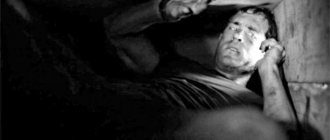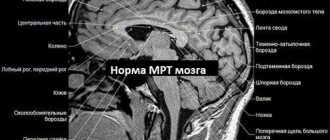general characteristics
In the modern scientific environment, there is some confusion of different concepts, incorrect use of certain terms. In this regard, there is a natural need to separate pathopsychology and psychopathology. The latter is considered a branch of medical science. It is focused on the study of syndromes and symptoms of diseases of the mental system. Within the framework of this discipline, various types of disorders and their mechanisms are studied. Pathopsychology is based on the patterns of structure and development of the normal psyche. She explores and compares the disintegration of personality traits with the normal course of processes. Thus, both these sciences have similar objects of study, but different subjects.
Pathopsychological examination is the most important indicator of the state of the central nervous system
Pathopsychology is a branch of psychological science. Her data have theoretical and practical significance for psychology and psychiatry.
Pathopsychology as a psychological discipline is based on the patterns of development and structure of the normal psyche. She studies the patterns of disintegration of mental activity and personality traits in comparison with the patterns of the formation and course of mental processes in the norm, she studies the patterns of distortion of the reflective activity of the brain.
Brain Clinic widely uses various modernized and classical methods of pathopsychological examination, which allows for a complete examination of the nervous system.
That is why Brain Clinic is the most advanced in the medical care system and has high results in treating various disorders of the nervous system.
Help is needed? Call us and we can provide you with all the assistance you need.
PRINCIPLES OF CONSTRUCTING A PATHOPSYCHOLOGICAL EXAMINATION
A pathopsychological examination includes a number of components: an experiment, a conversation with the patient, observation of the patient’s behavior during the study, analysis of the life history of the sick person (which is a medical history professionally written by the doctor), comparison of experimental data with the life history.
It is extremely important (although due to objective circumstances this is not always possible) to conduct a pathopsychological examination over time, i.e. in a year or two.
Methods of psychological research, depending on the specified mental quantities, are divided into the following:
- Analysis of sensations.
- Methods of perception analysis.
- Time measurements of mental processes.
- Methods for analyzing reproductions: simple reproductions, complex representations.
- Analysis of complex mental acts.
Pathopsychological examination and disturbances of consciousness
The concept of consciousness, which A.V. Snezhnevsky defines as “conditional,” is based on the views of the German psychiatrist K. Jaspers, who considers consciousness as the background against which a change of various mental phenomena occurs. Accordingly, with mental illness, consciousness can be impaired regardless of other forms of mental activity and vice versa. Thus, in medical histories one can find expressions that the patient has delirium with clear consciousness, impaired thinking against the background of clear consciousness, etc. Metaphorical signs of “clarity” and “stupidity” of consciousness, introduced by K. Jaspers, have become defining for the characterization of consciousness in psychiatry textbooks to this day. Following K. Jaspers, the following are taken as criteria for darkened consciousness:
disorientation in time, place, situation; lack of a clear perception of the environment: varying degrees of incoherent thinking; difficulty remembering current events and subjective painful phenomena.
To determine the state of darkened consciousness, it is crucial to establish the totality of all of the above signs. The presence of one or more signs cannot indicate confusion.
In psychiatry, there are different forms of consciousness disorders
Stunned state of consciousness
One of the most common in pathopsychological examination is the presence of syndromes of impaired consciousness, which is the stunned syndrome, which most often occurs in acute disorders of the central nervous system, in infectious diseases, poisoning, and traumatic brain injuries.
Delirious stupefaction. This state is very different from being stunned. Orientation in the environment is also disturbed, but it does not consist of a weakening, but rather an influx of vivid ideas and continuously emerging fragments of memories. What occurs is not just disorientation, but false orientation in time and space.
The oneiric (dream) state of consciousness (first described by Mayer-Gross) is characterized by a bizarre mixture of reflection of the real world and vivid sensory ideas of a fantastic nature abundantly emerging in the mind. Patients “commit” interplanetary travel, “find themselves among the inhabitants of Mars.”
We often encounter fantasy with a huge character: patients are present “at the death of a city”, they see “buildings collapsing”, “the metro is collapsing”, “the globe is splitting apart”, “breaking up and rushing in pieces in outer space”.
The twilight state of consciousness, in a pathopsychological examination, is an important indicator of a person’s condition. This syndrome is characterized by a sudden onset, short duration and equally sudden cessation, as a result of which it is called transistor, i.e. transient.
Pseudo-dementia. A type of twilight state of consciousness is pseudodementia. It can occur during severe destructive changes in the central nervous system and during reactive states and is characterized by acutely occurring disorders of judgment, intellectual and mnestic disorders. Patients forget the names of objects, are disoriented, and have difficulty perceiving external stimuli. The formation of new connections is difficult; at times, illusory deceptions of perception, unstable hallucinations with motor restlessness can be noted.
Depersonalization. It is characterized by a feeling of alienation from one’s own thoughts, affects, actions, one’s “I”, which are perceived as if from the outside. A frequent manifestation of depersonalization is a violation of the “body schema” - a violation of the reflection in consciousness of the basic qualities and ways of functioning of one’s own body. its individual parts and organs. Similar disorders, called “dysmorphophobia,” can occur in various diseases - epilepsy, schizophrenia, after traumatic brain injury, etc.
Tasks
Pathopsychology is a science aimed at obtaining additional information about the patient’s condition. In particular, his cognitive activity, emotional-volitional sphere, and personality as a whole are subject to research. This information is necessary when making a diagnosis. Experimental methods of pathopsychology make it possible to identify many signs of disorders, establish their structure and connection with each other.
Another important task that is solved within the discipline is to conduct research for examination (judicial, military, labor). During this procedure, a specialist can establish the structure of the disorders and their relationship with the intact aspects of mental activity or conduct a differential diagnosis. Such research is fraught with certain difficulties. They are determined primarily by the patient’s interest. In this regard, the patient may downplay the manifestations of violations, intensify them, or even feign them in order to avoid responsibility or to obtain disability. Another task that pathopsychology solves is the study of changes under the influence of therapy. In such cases, the same sets of techniques are used. With their help, repeated studies establish the dynamics of the condition and determine the effectiveness of treatment.
Application
A mental disorder itself is a painful condition accompanied by mental or physical manifestations. It is determined only in relation to mental health. Deviation from the norm is characterized by inappropriate reactions, decreased criticism of oneself, and a drop in productivity.
The most important information regarding clinical practice in pathopsychology is additional information about the patient’s condition, as it helps to make a differential diagnosis or identify a disorder in the early stages of its development and explore the dynamics of mental changes in the context of treatment.
For example, psychopathy and personality changes as a result of the development of schizophrenia - their symptoms are similar, and only pathopsychological studies can help in making a diagnosis. An equally important issue is early detection, and this is again easily illustrated by the example of schizophrenia.
We recommend: What is psychiatry?
Initially, the disease proceeds as a neurosis, and only pathopsychological studies help to detect disorders of the intellectual and emotional spheres, which lead to a diagnosis of “atypically debuting schizophrenia.” In turn, early diagnosis makes timely treatment possible.
When the disease is long-standing, pathopsychological studies help clarify the structure of mental defects.
Additional functions
In recent years, experimental pathopsychology has begun to be used to solve two additional problems. The first is related to rehabilitation measures. During their implementation, specialists pay great attention to identifying intact aspects of the patient’s personality and psyche. In addition, the patient’s social environment, the nature of relationships with other people, educational and work attitudes are studied. The goal of such research is to develop recommendations that would facilitate faster rehabilitation. The second independent function of specialists is their participation in psychotherapeutic activities. Here, however, it is worth noting that the issue of doctor participation in them is not sufficiently regulated at the legislative level.
Experimental pathopsychology
Specialists study the characteristics of mental states using many experimental methods of pathopsychology. Thanks to their use, various situations are recreated, the solution of which requires certain reactions from the subject.
Experimental methods are conventionally divided into verbal and nonverbal methods of research. This convention is due to the fact that when using a nonverbal method in research, the processes of the patient’s internal speech are invariably affected.
In general, there is no justified division of methods according to the focus of research on mental functions. This science is characterized by a wide range, so there is no point in studying memory, thinking and concentration separately.
Domestic figures
From the very beginning, the development of the industry was based on strong natural science traditions. The formation of principles and techniques was carried out under the influence of Sechenov’s works. He attached particular importance to the connection between psychology and psychiatry. Bekhterev became Sechenov's successor on this path. He is considered the founder of the pathopsychological branch in psychological science. Representatives of his school developed many methods for studying the mentally ill. They are still widely used in the discipline today. The main principles of the study were also formulated:
- Application of a set of techniques.
- Conducting a qualitative analysis of mental disorders.
- Individual approach.
- Comparison of the results of studying patients with information about healthy individuals according to gender, age, and cultural level.
Pathopsychological symptom and syndrome.
Page 1 of 4Next ⇒
Pathopsychology: definition, subject, difference from psychopathology, connection with other sciences.
Pathopsychology
– a branch of psychological science related to applied areas of knowledge.
The subject
is the study of the patterns of disintegration of mental activity and personality traits in comparison with the patterns of the formation and course of mental processes in normal conditions, the study of the patterns of distortion of the reflective activity of the brain.
Object -
disorders of mental activity, mental anomalies, uniting a large range of neuropsychic abnormalities, varied in clinical manifestations, severity and nosological nature, but common in the shallow level of mental disorders bordering on areas of normality and health. 2. Correlation of pathopsychology with other disciplines First of all, it is necessary to say about the sciences that played a leading role in the development of pathopsychology. This is general psychology and psychiatry.
Tasks of pathopsychology.
analysis of the structure of the defect, establishing the degree of mental impairment of the patient, his intellectual decline. Data from experimental pathopsychology become especially important when resolving issues of psychiatric examination (labor, judicial, military). Recently, the focus on psychocorrection has come to the fore. Attempts are made to substantiate psychological recommendations for psychocorrection. A special place is occupied by the use of pathopsychological experiments in a pediatric psychiatric clinic. A specific question for a child psychiatric clinic arises about the prognosis of learning ability and the related question about the selection of children into special schools.
3. The concept of mental health, criteria for deviation from the norm.
as defined by the World Health Organization, a state of well-being in which a person can realize his or her own potential, cope with the normal stresses of life, work productively and fruitfully, and contribute to their community
The World Health Organization identifies the following criteria for mental health
- awareness and sense of continuity, constancy and identity of one’s physical and mental “I”.
- a sense of constancy and identity of experiences in similar situations.
- criticality of oneself and one’s own mental products (activities) and their results.
- correspondence of mental reactions (adequacy) to the strength and frequency of environmental influences, social circumstances and situations.
- the ability to self-manage behavior in accordance with social norms, rules, and laws.
- the ability to plan one’s own life activities and implement these plans.
- the ability to change behavior depending on changing life situations and circumstances
Pathopsy methods
For a long time, psychological research was dominated by the method of quantitative measurements.
mental processes.
This method reached its extreme expression in Binet-Simon test studies, which were aimed at identifying mental abilities. But this method reveals only the final results of the work, the process itself, the subject’s attitude to the task, motives, and personal attitudes are not revealed. Systematic qualitative analysis
is the basic principle of pathopsychological research.
It is aimed not at measuring individual processes, but at studying a person performing real activities. Namely, a qualitative analysis of various forms of mental disintegration, the disclosure of mechanisms of disruption of activity and the possibility of its restoration. A pathopsychological experiment
is a mutual activity between the experimenter and the subject. Therefore, its construction cannot be rigid. The main difference between such an experiment and a general psychological one is that we cannot always see the uniqueness of the patient’s attitude towards the experiment, depending on his painful state. From this we can conclude the following: 1. Mental patients often not only do not try to complete the task, but also misinterpret experience or actively resist instructions; 2. The peculiarity of the pathopsychological experiment also lies in the diversity and large number of techniques used; 3. Completing experimental tasks has different meanings for different patients; 4. The pathopsychologist has to operate in his conclusion with a system of concepts that characterize the patient’s personality as a whole, along with the characteristics of individual processes; 5. Pathopsychological research reveals a real layer of the patient’s life because the presented activity and the experimenter’s remarks evoke an equally real experience of the subject. Typically, 89 techniques, selected in accordance with the objectives of the study, are sufficient to examine one patient. During the research process, techniques are usually used from simpler to more complex (with the exception of patients with expected aggravation or simulation).
Pathopsychological symptom and syndrome.
A pathopsychological syndrome is a relatively stable, internally connected set of individual symptoms.
A symptom is a single disorder that manifests itself in various areas: behavior, emotional response, and cognitive activity of the patient.
The pathopsychological syndrome is not directly given. To isolate it, it is necessary to structure and interpret the material obtained during the study.
It is important to remember that the nature of the disorders is not specific to a particular disease or its form. He is only typical of them.
These disorders must be assessed in conjunction with data from a holistic psychological study. The difficulty lies in judging why the patient does this or that.
Understanding the pathopsychological syndrome allows us to predict the appearance of the most typical disorders for a given disease.
6. Principles of constructing a pathopsychological study.
1. Organization according to the type of functional test . It was taken from medicine. In order to see how it works (under load). Example: test memory: memorization.
2. Mandatory consideration personal attitude to the research situation, reaction to his own mistakes, to the result, comments from the psychologist. In general, the situation of success and failure. Reaction to the researcher.
3. Mandatory qualitative analysis of research results:
- assessment of perception of instructions;
- Organization of Activities at the initial stage (whether a person quickly learns new tasks, etc.);
- when, what and where errors (Example: 10 words to memorize. Presented only 5 times. When an error occurred.). The quality of errors is assessed. Medications are taken into account. Criticality of the Patient and his use of help.
- the Patient's reaction to the experimenter's assessments. Is the person himself interested in the results of the (experiment) research?
Quantitative analysis.
4. Mandatory use of several methods aimed at studying one area, even with a one-time study of the Patient.
5. Desirability of repeated studies.
An important stage in pathopsychological research is conversation.
1. Familiarization: the Patient’s complaints, level of criticality, etc. We develop a strategy of personal behavior.
2. Accompanying: carried out during testing.
The final stage. Results, performance evaluation, recommendations.
1Next ⇒
Recommended pages:
Use the site search:
Pediatric pathopsychology
Before Zeigarnik’s works appeared in science, there was an opinion that in a number of neurotic diseases the patient’s behavior begins to move to a lower level, which reflects a certain stage of the child’s development. Based on this concept, many scientists have tried to identify a correspondence between the process of personality disintegration and a specific stage of childhood. For example, Kretschmer brought the thinking of a schizophrenic closer to adolescent development. In 1966, at the 8th International Congress, Ajuriaguerra (a Swiss scientist) defended the opinion of layer-by-layer mental decay from higher to lower forms. These conclusions were based on a number of observations:
- With some diseases, patients lose the ability to perform complex activities. At the same time, they retain simple skills and abilities.
- Some forms of behavior and thinking disorders resemble the actions and thinking of a child.
Pathopsychological diagnosis
Pathopsychology is an applied branch of clinical (medical) psychology that studies cognitive (cognitive), emotional and behavioral processes in the structure of personality.
Cognitive processes include: perception, attention, memory and thinking. Pathopsychological diagnosis aims to analyze the patient’s current condition in order to:
- identify whether there are any changes, disturbances in cognitive processes in comparison with the norm and/or the results of the previous examination;
- make an accurate diagnosis;
- distinguish one mental disorder from another (differential diagnosis);
- prescribe appropriate therapy based on the results obtained.
Pathopsychological examination is carried out by a clinical psychologist using specialized techniques. Each of them is aimed at studying a specific process: eliminating unnecessary things (thinking), Schulte tables (attention), memorizing 10 words (memory), etc. Based on the diagnostic results, the specialist writes a conclusion where he lists the results obtained, draws conclusions based on them and identifies the symptom complex characteristic of a disease.
Next, this document is sent to a psychiatrist, who, based on the data received and his own examination, makes a diagnosis. Of course, the primary thing is to directly study the patient during a conversation with a doctor. But pathopsychological testing clarifies the details and helps to make a differential diagnosis between several suspected diseases.
When is it appointed?
Pathopsychological examination is prescribed for the primary, repeated or differential diagnosis of diseases such as:
- schizophrenia;
- neurosis;
- epilepsy;
- mental retardation;
- depression;
- bipolar affective disorder (BD);
- personality disorder (psychopathy);
- senile dementia, etc.
Each group of pathologies has its own set of symptoms and typical disorders of memory, perception, thinking, attention and behavior. Also, based on the severity of these disorders, you can determine the degree of development of the disease, and therefore prescribe the correct treatment and rehabilitation course. Repeated research helps to understand how effective the prescribed therapy is.
In addition to diagnosing diseases, a pathopsychological examination can be prescribed to test work ability, identify personal characteristics that are important for a particular type of activity, that is, to determine talents and abilities for a certain type of activity. Based on the results of the study, clients are given a conclusion and recommendations; if necessary, a consultation with a specialist is scheduled.
Diagnostics at the Transfiguration clinic
The Transfiguration clinic provides professional pathopsychological diagnostics and psychotherapy based on the results obtained. We guarantee:
- Personal approach. The duration of the examination and the selection of methods may vary; it depends on the characteristics being tested, which change with a particular disease, or on the individual request of the person being tested.
- Efficiency. The research time takes 1-1.5 hours. The results will be ready in the shortest possible time.
- Anonymity. When you contact us for help, you can be sure that the diagnostic results will not become public.
The reception is conducted by
| Simakova Alexandra Aleksandrovna Clinical psychologist (psychodiagnostics, psychotherapy, consultations of patients and their relatives). Specialization in working with persons with mental disorders. |
You can find out more about how the examination is carried out from the operators and specialists of the clinic by phone, 8 (800) 200-01-09 or e-mail Other contacts are listed in the section of the same name.
Find out the cost of consultation
<
Luria, Zeigarnik, Rubinstein: pathopsychology and biological patterns
The data of these researchers concerned disorders of thinking, reading and writing in patients with vascular diseases, Alzheimer's disease, and brain injuries. Based on the information received, a new point of view was substantiated. It was that the course of mental illness is influenced by biological laws. They cannot repeat the principles and stages of development. Even when the disease affects young, specific parts of the brain, the patient’s psyche does not acquire the structure of a child at an early stage of development. The patient's inability to reason and think at a high level indicates a loss of complex cognition and behavior. But this does not mean that he is returning to the childhood stage.









